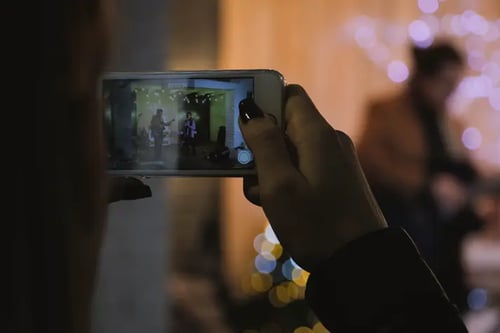
What is ethnographic research?
The focus group is highly valuable for learning people’s thoughts, opinions, and behaviours. However, the artificial nature of the focus group setting means that it isn’t always the most effective way to gauge consumer behaviour, which is where alternative methods of research come in. Ethnographic research turns the focus group inside out. Instead of bringing the subject to the researchers, the researchers embed themselves in the environment of the subject.
Ethnographic research has its roots in anthropological study, a field where researchers go into a particular cultural environment and learn first-hand how people live and behave. Some of the more dramatic instances of this have occurred when a researcher has gone away to live with members of a remote tribe for a prolonged period of time, but it can also be as simple as periodically visiting the home of someone who lives across town.
Why Ethnography?
Ethnography has many applications for market research, but it is best used in cases where it is very important for researchers to really see how consumers are behaving “in the field.” Traditional market research methods often require researchers to trust that the people they are interviewing will be candid when describing their experiences or providing assessments, but ethnography offers an opportunity for researchers to personally observe and track these experiences.
By watching consumers interact with a product in a “normal” environment, the researcher can see how they are really using it. Sure, Bob bought the high-tech TV for all its great features, but is he still having trouble figuring out how to actually use them? Getting a glimpse inside the home can also yield very useful information about consumer characteristics and habits, and how they might relate to product usage. Mary says she exercises regularly, so why does the treadmill have an inch of dust on it?
The ethnographic researcher has the opportunity to get to the heart of real consumer behaviour, sometimes learning things about the consumer that they haven’t even consciously recognized about themselves. Armed with this information, a company may find that they need to alter the way products are made or packaged. They may also discover that they need to communicate with customers – and their potential market as a whole – in more effective ways.
Techniques of the Trade
Ethnographic research can be carried out in a few different ways. A researcher may simply spend time with participants – at home, at work, at the store, in a restaurant, or in other environments – to observe how they use a product, engage in a customer experience, or perhaps how they shop and their thought processes. The researcher will note how the consumer is reacting, what they’re saying, and how they appear to be feeling, while also describing notable aspects of the environment in which these responses are taking place.
Another helpful technique of ethnography is to talk directly to subjects or users about their experience, allowing them to personally describe their thoughts, responses, and motivations. These conversations tend to be casual and can elicit illuminating information that would not have necessarily been obvious just from watching the subject. Comparing and contrasting what the consumer says with what has been observed can also prove enlightening.
In addition to these techniques, 21st century ethnography is increasingly making great use of modern technological tools, allowing participants to create video diaries and take photos of their experiences as they’re happening to add depth and detail to the research. As they say, a picture is worth a thousand words, so these methods can be every bit as informative as a traditional report.
Determining Whether or Not to Engage in Ethnographic Research
The advantages of ethnography are clear. It provides a more immersive experience for the researcher, giving them a kind of “fly on the wall” view of the consumer experience. This provides an especially authentic view of real-world consumer behaviour. The disadvantages are primarily in cost and logistics, since ethnographic research is more time-consuming and complicated by nature, requiring extra preparation before and extra time after to go through all of the data that has been collected.
When deciding whether or not to engage in ethnographic research, it is important to consider the ethical implications. Being honest and upfront with the participants about the nature of the research is important, and researchers must be careful to be discreet about what they learn about people while immersed in their world.
While there are some challenges to implementing ethnographic research methods, the resulting data can have immeasurable value in terms of knowing how consumers shop for and utilize products. Short of actually inhabiting the body of the consumer, it’s the closest you can get to understanding the true consumer experience.
Want to learn more about Ethnography? One of our clients Naked Eye, are true experts in this field, check out their video to understand more about Ethnographic research.
We help Naked Eye to find consumers, patients and professionals who fit specific criteria and are willing to participate in long term Ethnographic research. If you’re thinking about an Ethnography project for your brand or client, tell us more about your project below and let us help you get great results from your research:







.png?width=110&height=61&name=MRS%20(2).png)


